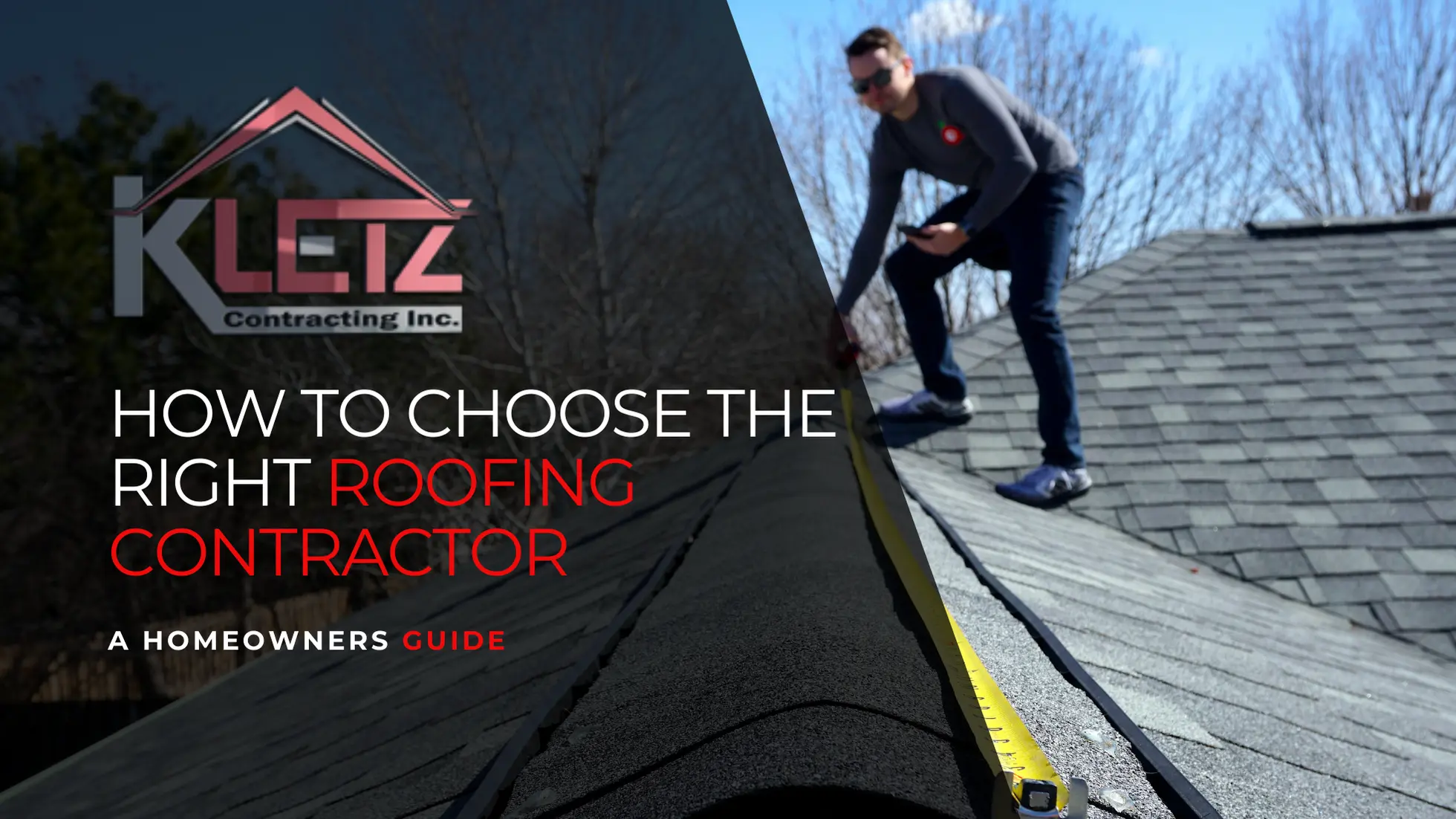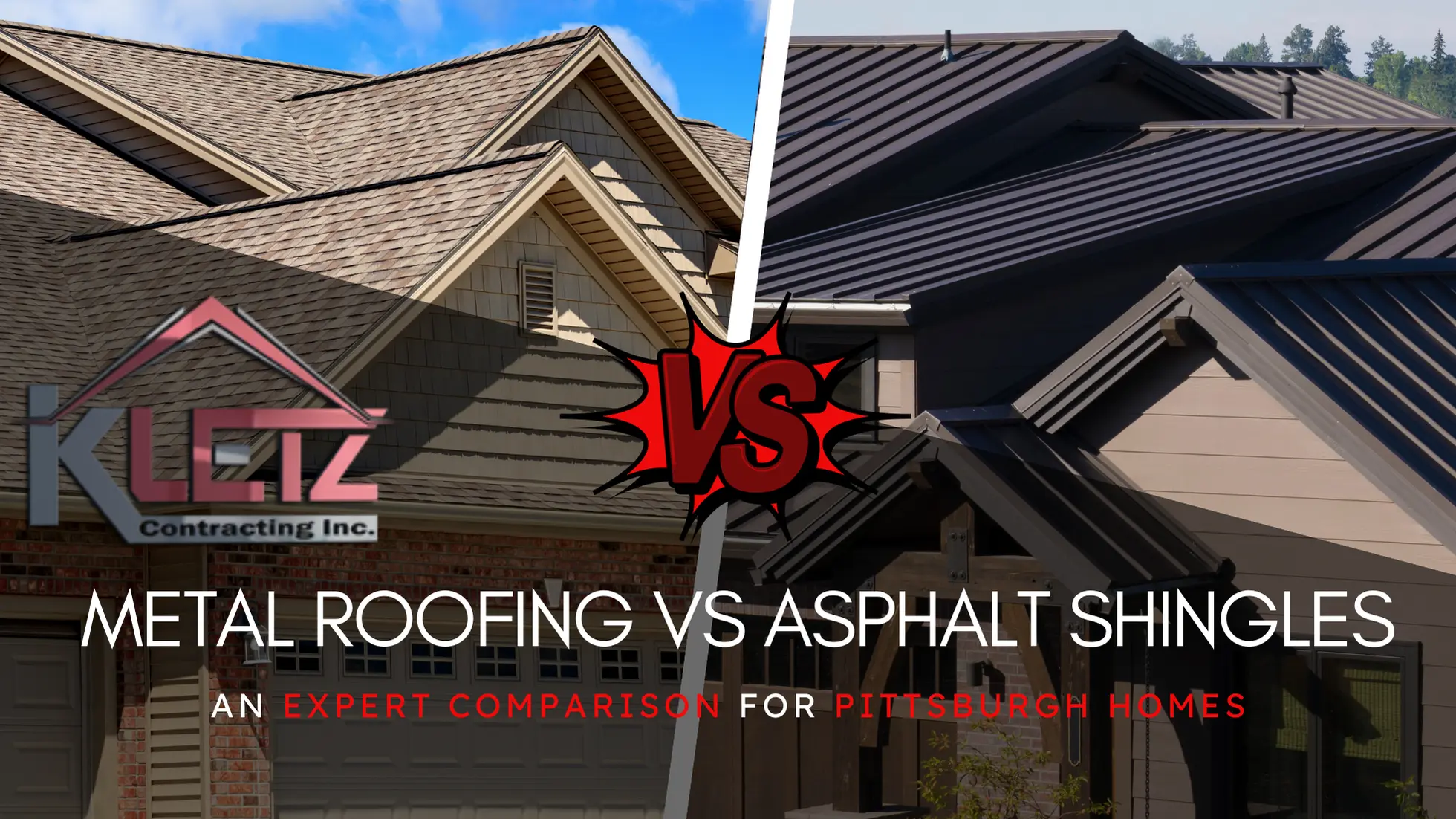Your home's siding does more than create curb appeal—it protects your investment from weather, pests, and time itself. Whether you're building new, replacing damaged siding, or simply ready for a fresh look, choosing the right siding material is one of the most important decisions you'll make for your home. At Kletz Contracting, we help homeowners navigate the options to find the perfect balance of beauty, durability, and value.
Why Siding Matters More Than You Think
Before diving into material options, let's understand what quality siding brings to your home:
Weather Protection: Siding is your home's armor against rain, wind, snow, and sun. Quality siding prevents water infiltration that can lead to rot, mold, and structural damage.
Energy Efficiency: Modern siding options, especially when paired with proper insulation, can significantly reduce heating and cooling costs by creating a better thermal envelope.
Maintenance Reduction: The right siding choice can eliminate the need for frequent painting and repairs, saving time and money over your home's lifetime.
Resale Value: Updated siding can recoup 60-80% of its cost at resale while making your home more attractive to potential buyers.
Popular Siding Options: Pros and Cons
Vinyl Siding
The most popular choice in America, vinyl siding offers an attractive combination of affordability and low maintenance.
Pros:
- Budget-friendly initial cost
- Never needs painting
- Resists insects and rot
- Available in numerous colors and styles
- Can mimic wood grain textures
- Easy to clean with just soap and water
Cons:
- Can crack in extreme cold
- May fade over time (though modern vinyl resists this better)
- Lower-end options can look artificial
- Difficult to repair small sections
Best for: Homeowners seeking maximum value and minimal maintenance.
Fiber Cement Siding
Brands like James Hardie have revolutionized this category, offering the look of wood with incredible durability.
Pros:
- Fire-resistant and insect-proof
- Holds paint exceptionally well
- Won't rot or warp
- Available in many styles including shingles and board-and-batten
- 30-50 year lifespan
- Excellent return on investment
Cons:
- Higher upfront cost than vinyl
- Requires professional installation
- Needs repainting every 10-15 years
- Heavy material requiring special handling
Best for: Homeowners wanting premium durability and authentic wood appearance.
Wood Siding
Traditional and beautiful, wood siding offers unmatched natural appeal.
Pros:
- Natural beauty and warmth
- Can be painted or stained any color
- Environmentally friendly when sustainably sourced
- Good insulation properties
- Can be repaired easily
Cons:
- Requires regular maintenance (painting/staining every 3-7 years)
- Vulnerable to insects and rot
- Fire risk without treatment
- Higher long-term maintenance costs
- Can warp or crack
Best for: Those who love natural materials and don't mind regular maintenance.
Engineered Wood Siding
A modern alternative that combines wood fibers with resins for enhanced performance.
Pros:
- More affordable than solid wood
- Better moisture resistance than traditional wood
- Authentic wood appearance
- Can be painted
- More consistent than natural wood
Cons:
- Still requires regular maintenance
- Not as durable as fiber cement
- Can swell if moisture penetrates
- Limited warranty periods
Best for: Homeowners wanting wood aesthetics with improved durability.
Metal Siding (Aluminum or Steel)
Once common, now often chosen for modern or industrial aesthetics.
Pros:
- Extremely durable and fire-resistant
- Insect-proof
- Recyclable
- Low maintenance
- Won't rot or crack
Cons:
- Can dent (especially aluminum)
- May fade or chalk over time
- Limited style options
- Can be noisy in rain or hail
- Shows scratches easily
Best for: Contemporary homes or those in fire-prone areas.
Factors to Consider When Choosing Siding
Climate Considerations
Your local weather patterns should heavily influence your choice:
- Humid climates: Choose moisture-resistant options like vinyl or fiber cement
- Cold climates: Consider insulated siding options for energy efficiency
- Hot, sunny areas: Look for fade-resistant materials with good UV protection
- Coastal regions: Salt-resistant materials are essential
Architectural Style
Your siding should complement your home's architecture:
- Traditional homes: Clapboard or shingle styles work well
- Modern homes: Smooth panels or board-and-batten create clean lines
- Historic homes: May require specific materials to maintain character
Maintenance Commitment
Be honest about how much maintenance you're willing to perform:
- Low maintenance: Vinyl or fiber cement
- Moderate maintenance: Engineered wood
- High maintenance: Natural wood
Budget Considerations
Remember to factor in long-term costs:
- Initial cost: Materials and installation
- Maintenance costs: Painting, repairs, cleaning
- Energy savings: Better insulation means lower bills
- Longevity: Cheaper options may need replacement sooner
Color and Style Trends
Today's siding offers endless design possibilities:
Popular Colors:
- Navy blue and deep grays for drama
- Warm whites and creams for timeless appeal
- Earth tones for natural harmony
- Two-tone combinations for visual interest
Trending Styles:
- Mixed materials (combining stone, brick, and siding)
- Vertical board-and-batten accents
- Shake and shingle accents on gables
- Wide plank horizontal siding for modern looks
Signs It's Time for New Siding
Watch for these indicators:
- Frequent painting needs
- Warping, cracking, or rotting boards
- Loose or missing pieces
- Fungus, mold, or mildew growth
- High energy bills indicating poor insulation
- Interior wall damage from moisture
The Installation Process
Professional installation ensures your siding performs as intended:
- Inspection and Preparation: Checking for underlying damage
- Moisture Barrier Installation: Critical for preventing water damage
- Insulation Options: Adding or upgrading for energy efficiency
- Precise Installation: Following manufacturer specifications
- Finishing Touches: Trim, corners, and caulking for a polished look
Making the Smart Choice
Choosing new siding is an investment in your home's future. The right choice protects your home, reduces maintenance, cuts energy costs, and enhances curb appeal for decades. Consider not just the upfront cost, but the long-term value each option provides.
At Kletz Contracting, we've helped countless homeowners transform their properties with quality siding installation. Our experienced team can assess your needs, explain your options, and deliver professional installation that maximizes your investment.
Ready to give your home a fresh new look while improving its protection and efficiency? Contact us today for a consultation and discover how new siding can transform your home's appearance and performance.


